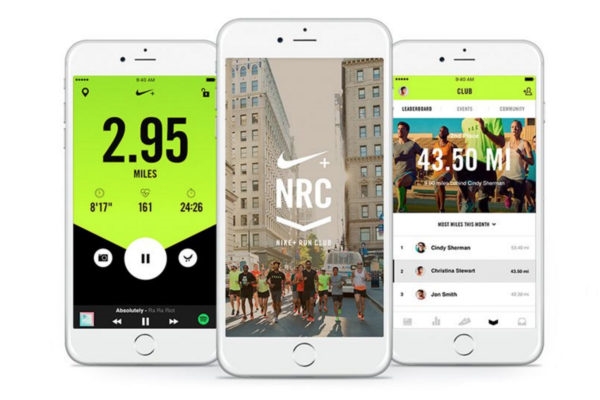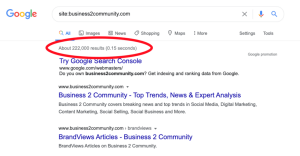— September 25, 2017

geralt / Pixabay
If you’ve managed to build a sizeable social media following, you might be a bit underwhelmed by the results.
While this is very important to growing your brand, it often doesn’t result in the kind of ‘bottom line’ increasing transformation that many hope for.
This is why many brands are now focusing on community building.
It may be time for you to do likewise and create your own social network as well.
Your social network can take many forms. You might consider building your community on your website through user forums. Many brands opt to create private membership/community areas. The main idea is to create a space for people that have a deeper interest in or loyalty towards your company, your products, and your services.
There are several massive benefits to creating your own social network.
- First, you can drive traffic to your website. This can be done directly if you create your own social network on your site.
- Because your community members are likely to be a bit further into the sales funnel, you’ll be able to share content that is a bit more promotional, leading people to your product and landing pages.
Some brands also use these social networks as an additional income source. The most common way to monetize these communities is by charging an entrance or subscription fee of some sort. Of course, to do this you have to provide something truly worthwhile in return.
If you decide the effort is worthwhile, be prepared to put in some hard work. Creating and maintaining a social network is no easy feat. However, the following guidelines should help.
Identify Your Power Users And Brand Loyalists
While there’s nothing wrong with promoting your social community to a general audience, you’re more likely to get the best results by targeting those most likely to join. This will be your power users and brand loyalists. And this will be the main reason for your community to go viral.
One thing to consider is looking beyond the internet. Yes, you should promote your network to your loyal followers (more on that below). However, if that’s all you do, you could be missing out on some great opportunities. Ask yourself this:
- Do you have a brick and mortar location?
- Are you present at community events, conferences, or conventions?
Any place where you get face time with customers, potential customers, or associates should be seen as an opportunity to reach out and inform people about your network.
Now, back to the internet.
It’s time to look at the people who are already connecting with you online. Don’t focus on the folks who occasionally breeze by with a like share or comment. Instead, focus on those who regularly participate in discussions, those who share insights about your products, and who have reached out to you directly. These are the people most likely to join and become valuable participants in a social community.
Finally, get off of your own social media pages and look elsewhere.
Check out customer review sites. If you sell product through Amazon, chances are you’re getting reviews. Reach out to people who have taken the time to do so. Just keep in mind that while gushing, glowing reviews are flattering, the most valuable community members are going to be those who provide detailed and insightful opinions.
Get Inspiration From Other Brands
Fortunately, other brands have done what you are trying to accomplish, and many have done a great job at it. Investigate what other companies have done to create social networks.
One example that stands out is Nike. They have managed to create an active and loyal community of athletes and other fitness enthusiasts who have joined their ‘Take a Run With Nike+’ community.

Not only do participants share experiences, and challenge one another, many promote their activity to their other social media accounts, thus creating the “ripple” effect and gauging new participants to Nike’s social club.
Get Insights From All Business Areas
What will your social media community be looking for?
You can obviously get insights from your social media following. However, you shouldn’t ignore the people who work for you. You’re sure to get lots of insights from your customer service team and sales staff. After all, they have direct access to customers, and know what people want, what they struggle with, and what excites them.
Keeping in mind that your community members also want access to informative content about your products, upcoming developments, and other news reach out to your research and development and marketing teams as well.
In fact, when it comes to creating content to share with your community, you might benefit from getting people from all business areas to create and curate content and content ideas. After all, who is better qualified to share content about best uses of your products than the people who development? Who is better qualified to communicate about your company’s charitable efforts or community involvement than the event coordinator who manages all of that?
Choosing a Platform For Your Community
The simplest choice is to make use of an existing community such as Facebook, and create a closed group just for members of the community.
Another option is to create a community forum to be hosted on your company website. There, you can create multiple boards where members can post messages, questions, and announcements. You and your team can act as moderators and community leaders.
Users who show a particularly in-depth level of knowledge, leadership, and interest can be recruited to become power users or community leaders as well. There are several powerful tools that you can use to create and manage an online forum.
Your third option is to create your own social network. This all in option may seem intimidating, but the features may be well worth it to you. Your community members will be able to create their own profiles on your network. You’ll be able to share content with your members, and they will be able to share their own pictures, videos, and stories as well. Other options include creating special events, even creating subgroups within your network. This may seem intimidating but keep in mind that a tool like Ning can make building a social network very easy.
Consider Localization
Social networking communities gain traction and grow through engagement. It’s not enough that participants engage with you. The idea is getting members to engage with one another as well. To be frank, even among your most enthusiastic followers, shared interest in your brand may not be enough. Building a community is a hard task, but you cope with that.
People tend to engage with one another when they have shared values, interests, and experiences. One way to get people with these commonalities together is to localize your community building efforts. This can be accomplished simply by creating discussion boards or forums based upon user location. Once you have done this, you can also customize the content that you share based upon location.
Know What You’re Going to Offer
Getting your audience to join is enough of a challenge, but that pales in comparison to getting them to stay. You have to offer them content that they want and need. You also have to keep that content coming. So, you have to decide what kind of content you will offer, and determine how you will sustain your efforts.
First, your social network will only be worth joining if members are getting something they cannot get elsewhere. Not only should that content be gated for members only, it should be of significantly higher quality as well. Here are just a sampling of content ideas for your network:
- A user area where members can share photos videos and stories
- Question and answer forums where your team can give expert insights
- How to content such as white papers and demonstration videos
- Special offers such as members only discounts or early access to new products
- Company announcements and events
- First chance access to tickets premium content and other items
- A community spotlight where members who have made significant contributions to the community are recognized
- They can pursue their career goals via establishing strong connections within the society
Be Prepared For Your Audience
Creating your social network is just the beginning. You also have to keep it running smoothly. Audience management is a big part of this. In any community you’re going to deal with friction between community members, for example. So, comment moderation will likely be necessary. You’ll also need to be prepared to deal with an influx of comments, questions, and simply user generated content.
Digital & Social Articles on Business 2 Community
(68)
Report Post




